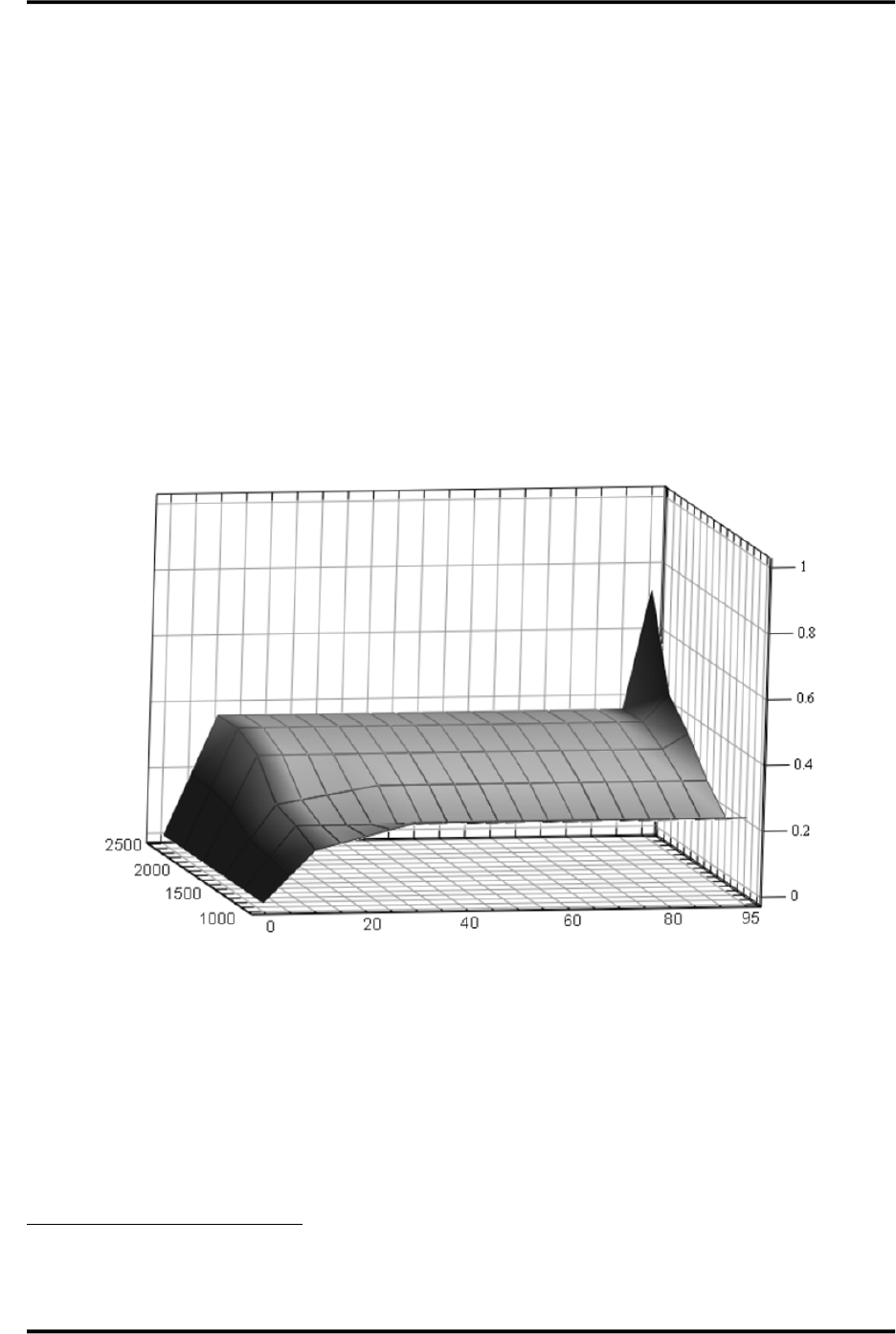
Appendix
58 MarathonSeriesFA/FR
11.5AttenuationInfluenceonAccuracy
TheabilityoftheFRratioinstrumentstoaccuratelymeasurethetemperatureoftargetssmallerthan
the field‐of‐view (FOV) is a key feature. As the target size becomes smaller than the FOV (thus
attenuatingthesignal)thismaycauseaslightinaccuracyinthereading.Thefollowingfigurepresents
typicalmeasureddataforan
FR1C unitshowinghowthisdegradationinreadingaccuracydepends
uponboththeamountofgeometricalattenuation
1
andthetargettemperature.Noticethattheworst
inaccuraciesoccuratthehighesttargettemperaturesandthehighestattenuations.
Theworstinaccuracy(atthehighesttemperatureandthehighestgeometricalattenuation)isthevalue
guaranteedinourspecifications.However,noticethattheaccuracyoftheinstrumentisapproximately
afactor
oftwoormorebetterthanourspecificationoverthemajorityoftheusabletemperatureand
attenuationcombinations,i.e.,forallgeometricalattenuationslessthanapproximately80%!Thus,by
choosing the sensor‐to‐target distance properly so that the target fills at least 20% of the FOV
(attenuation<80%)the
sensorperformancewillbesignificantlyimproved.
Figure44:MaximumError
1
GeometricalAttenuation(%)isdefinedas[1‐(SmallTargetSignal/TargetSignalwhentargetfillsFOV)]x100.Thus,ifthe
signalfromthetargetisonly30%ofthevaluewhenthetargetfillstheFOV,thentheGeometricalAttenuation=[1‐0.3]x100=
70%.
Geometrical Attenuation[%]
Target temperature [°C]
Max
⏐UT⏐
±% T
abs


















